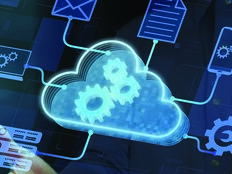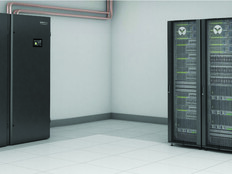Agencies can struggle to stick to recommended three- to five-year IT refresh cycles due to their large install bases, tight budgets and legacy technologies that are not interoperable with newer ones.
The Department of Defense wants to standardize refresh cycles across its branches because holding on to aging IT infrastructure has led to widespread frustration over poor user experience.
Things came to a head when a Defense Business Board survey in February 2023 found that 80% of its approximately 20,000 respondents considered their UX average or below average, with 48% rating it their “worst” ever.
“Hardware — especially in on-premises environments — is aging,” says Chris Gibes, a manager in the hybrid infrastructure practice at CDW. Organizations “are holding on to gear longer than they traditionally have in the past,” he says. “Now, we’re starting to see these refresh cycles impacting the ability to actually improve and bring in new applications, and it’s also creating concerns about power consumption and reliability.”
Agencies need to keep several strategic considerations in mind as they look to modernize, move workloads to optimized infrastructure components and take full advantage of new technology capabilities.
Click the banner below to begin building modern IT architectures.
Why Modernize? Because AI Is Already Here
Many agencies are looking to modernize their IT infrastructure to reduce maintenance costs, increase agility and use automation.
“As the pace of emerging workloads increases, changing workload delivery and mergers disrupt organizations. They can’t afford to spend time worrying about their application infrastructure,” says Matt Cobb, a solution architect team lead at CDW. “Modernization initiatives provide increased agility, enable frictionless service delivery and, most important, allow highly skilled employees to focus on returning value to the business.”
Modernization also provides access to new capabilities. “There are technological advances that organizations want to take advantage of, and the most obvious one is artificial intelligence,” Gibes says. “We know that AI is coming and that organizations have to be ready for it.”
Even in its infancy, AI adoption is widespread. In fact, an August 2023 study by McKinsey found that 55% of organizations have adopted AI for business functions.
To take advantage of AI, agencies need infrastructure that supports it. This includes storage platforms that can keep up with the creation and movement of massive quantities of data, and processing power to handle the complex algorithms that AI relies on. Many agencies are turning to the cloud to meet these needs, while others are purchasing hardware with advanced capabilities, such as high-powered graphics processing units to support the demands of AI workloads.
Hybrid Cloud Environments Enable Effective Modernizations
As agencies include modernization initiatives in their IT infrastructure plans, the vast majority are implementing a hybrid model that includes cloud resources as well as on-premises hardware. According to a 2024 report from Flexera, 73% of organizations operate a hybrid cloud environment.
“This is something that’s happened over the past 10 years, this widespread adoption of public cloud, because people were getting services in the public cloud that they liked, but they needed to keep their on-premises environments as well,” Gibes says.
To see the best results, agencies must approach their modernization initiatives strategically. An effective first step is to rightsize their cloud investments. For example, the public cloud offers flexibility and seamless scalability for workloads that have intermittent demand. Keeping workloads with steadier demand in in-house data centers can help agencies save money, provide greater control, and address concerns about security and regulatory compliance.
“On-premises infrastructure usually has some characteristics that provide really good performance in certain circumstances,” Gibes says. “It also gives greater control over security.”
Any effective modernization effort needs a clear, comprehensive strategy to guide it. Many agencies don’t know where to start, but a trusted partner can help. A third party can assess an agency’s current IT infrastructure and map out a path to the new capabilities the organization wants to enable. “There are a lot of paths that you can go down,” Cobb says. “Advisory services and assessments can help you along the path that’s right for you.”












